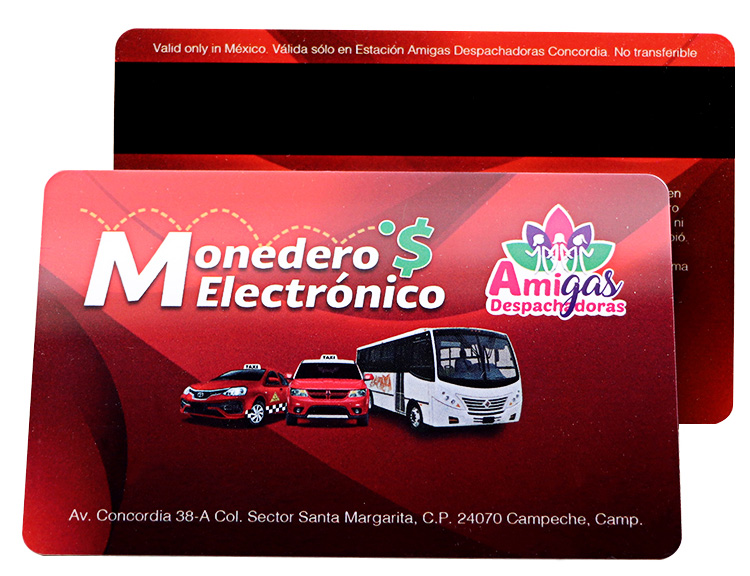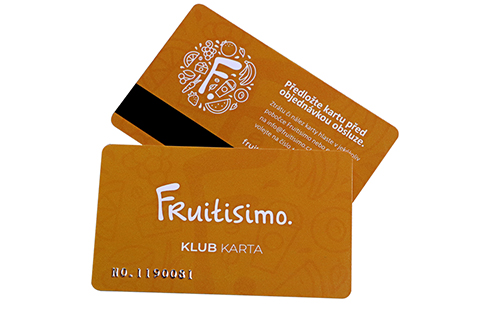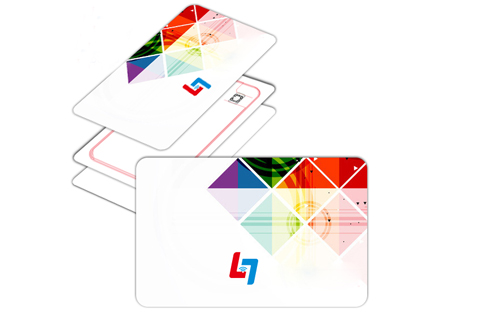-
What Is The Difference Between A Chip Card And A Magnetic Stripe Card?
Nowaday, with the informatization and electronicization of the national economy, magnetic strip cards and IC cards have been widely used in production and life. And for now, our country has issued 200 million magnetic cards and IC cards for each year. So how do magnetic cards and IC cards work? What is the difference between them?
The magnetic stripe card is made by evenly coating a layer of magnetic particle material on a plastic sheet. The magnetic particles on the newly produced magnetic card are not magnetic. Such a magnetic card is like a piece of white paper. People need to input some information in the magnetic card to use it.

-
So how is the information recorded?
This requires the help of the recording head. The recording head is a device that generates a magnetic field proportional to the current once current is applied. We can use the magnetic card through the recording head by the control device, and the magnetic particles on the magnetic card are magnetized. If the signal current changes, this current can express some kind of information, and the magnetic body on the magnetic card will be magnetized to varying degrees with the current change. After the magnetic card is magnetized, the same magnetism as the current change is left on the card. At this time, the magnetic card also records the information sent by the current and thus has its own identity. According to the pre-set rules, people can know what information is contained on the magnetic card when needed.

From the above, we can see that the magnetic card and tape recorder work on the same principle.
Few years ago, the bank cards what we use commonly that's magnetic cards. It allows us to complete the payment with a simple swipe, eliminating the hassle of finding change. The process of our bank card consumption is the process of reading and re-magnetizing the card by the recording head of the card reader.
-
So, what's the advantage and disadvantage of Magnetic Stripe Cards?
The advantages of magnetic cards are convenient reading and writing and low cost;
The disadvantages of magnetic cards are that they are easily worn out and easily interfered by other magnetic fields. So it is best not to put it in the same pocket with the phone and the key, because the magnetic field generated by the phone will invalidate the magnetic card and the key will scratch the magnetic strip.
The IC (Integrated Circuit) card was invented by the Frenchman Roland Moreno in 1970. He encapsulated the integrated circuit chip in a small copper sheet and then embedded it in a plastic card to create the world's first IC card. "IC card" and "magnetic card" are both names from a technical point of view. They should not be confused with "credit card", "phone card" and other cards named from an application point of view. For example, phone cards have both magnetic card type and IC card type. Since the appearance of the IC card, it has been called in many ways in the world.

The main body of the IC card is a plastic sheet, usually printed with various patterns, characters and numbers, called "substrate". A specific IC chip is embedded in a fixed position of the "substrate". This chip is from the best way to distinguish between magnetic card and IC card in appearance, various types of IC cards are produced according to the different embedded chips.
IC cards can be divided into contact IC cards and non-contact IC cards (radio frequency cards) according to the method of use. The contact type IC card is that after inserting the card into the card holder, the card exchanges information with the outside world through a contact piece with circuit legs left on the outside of the plastic card. The phone cards we usually use with a small piece of metal on it belong to this type. The non-contact IC card exchanges information with the outside world through electromagnetic waves. The basic principle of its work is: an external device sends a set of electromagnetic waves to the IC card. There is an LC resonance circuit in the card, and its frequency is the same as the transmitted frequency. Under excitation, the LC resonance circuit resonates, so that there is a charge in the capacitor. When the accumulated charge reaches 2V, the capacitor can be used as a power supply to provide working voltage for other circuits, transmit data in the card or receive a reader The data. The monthly pass used on the bus is this kind of card, and passengers don’t even need to take the card out of the bag to complete the ticket purchase process.
The second-generation ID card in China, adopts the latest IC card technology. It can not only be used in a contactless manner, but also can be read by a contactless machine. It successfully combines the security and confidentiality of contact with the convenience and speed of contactless. Together.
Compared with the magnetic card, the information of the IC card is stored in the chip, which makes it less susceptible to interference and damage, and has a longer service life. At the same time, the information capacity of the chip is also much higher than that of the magnetic card, which has more advantages in storing personal data. However, its shortcomings are also obvious. The cost is relatively high. In addition, compared with the magnetic card, it is not easy to replace it after damage or loss.


